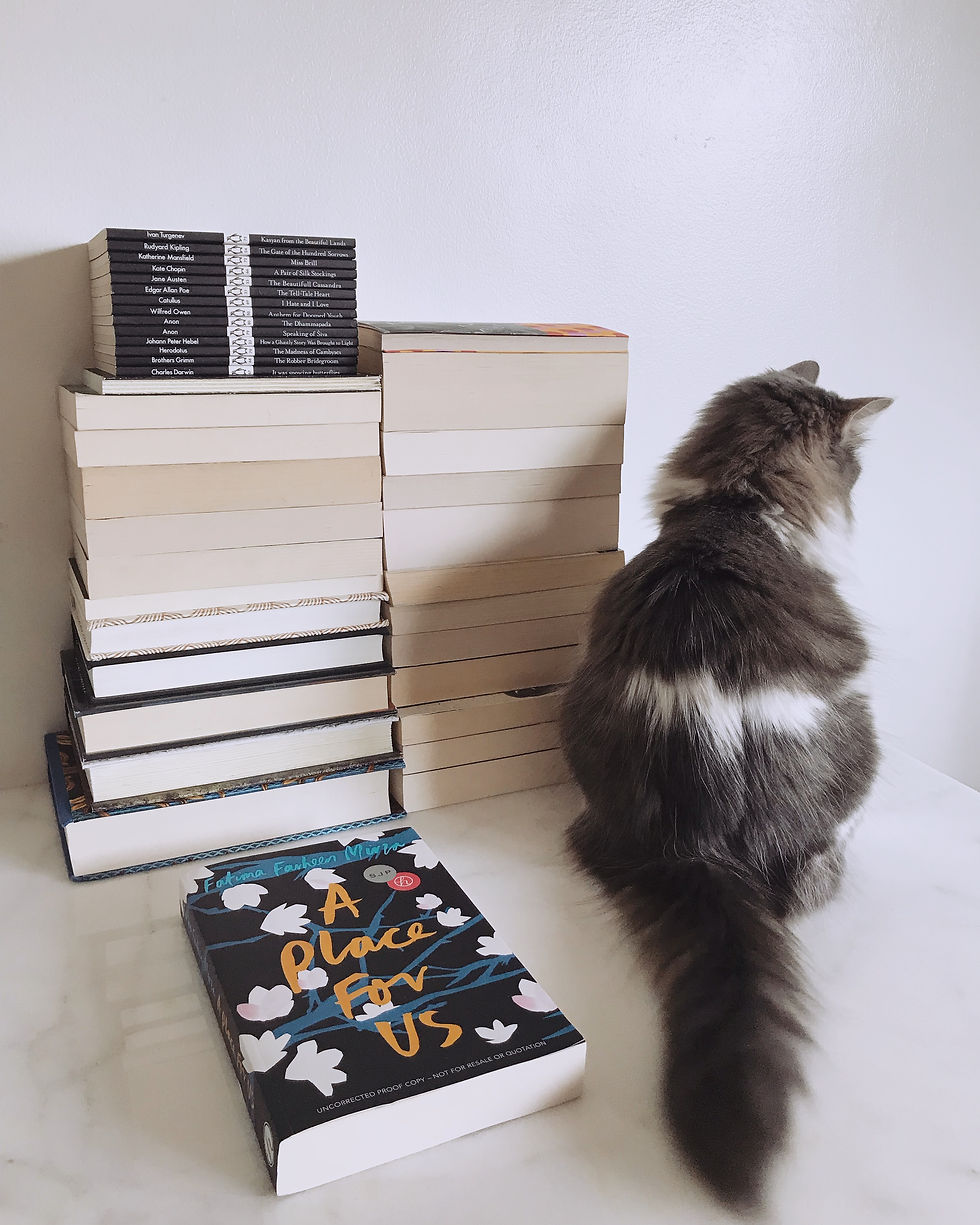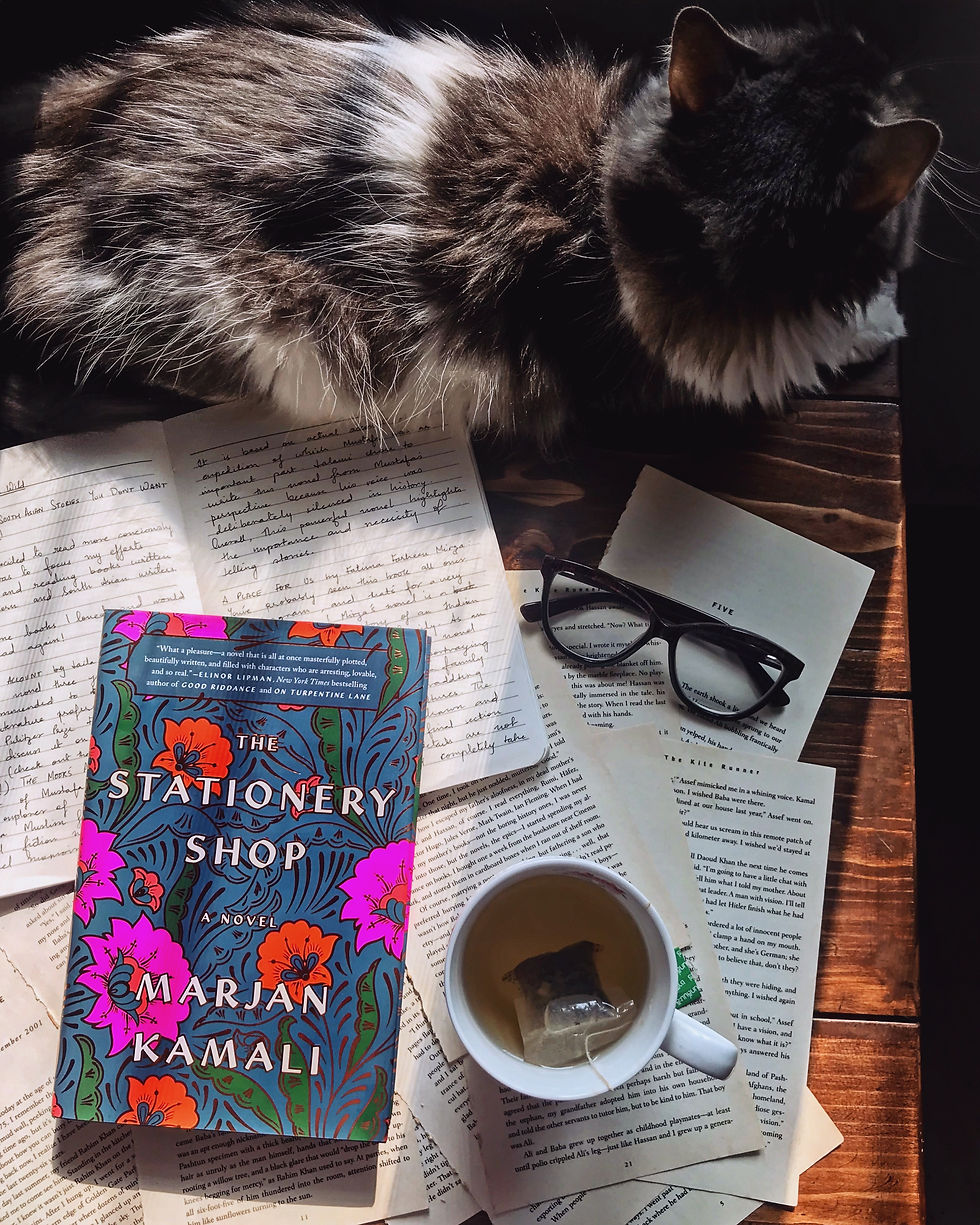Must Read Books by Middle Eastern and South Asian Writers by Sumaiyya Naseem
- Sameena
- Sep 11, 2019
- 4 min read
Updated: Sep 14, 2019
It's that time of year again, we are back at uni, college or school, it's that weird weather where it's freezing in the morning but 20c during the afternoon and autumn is knocking at the door. But it also means we are back with our blogs! We will try to get them posted out every Monday, Wednesday, Friday and Sunday, we are both uni students with mountains of reading and assignments so bare with us if we miss a day or two.
Let's kickstart this academic year with an amazing new blog written by the lovely Sumaiyya Naseem. I came across her Instagram account and was so surprised to see it was about Middle Eastern and South Asian literature because most of the books I have read are written by white people. That isn't very unusual growing up in England and I'm sure most of you have never thought about widening your reading either but Sumaiyya has just the reading list to get us started.
Sumaiyya Naseem is a bibliophile from Saudi Arabia. She is a bookstagrammer, book reviewer and a contributor for the Reading Women podcast. Sumaiyya is currently pursuing a Masters in English Literature and also working part-time as a freelance writer and book editor. She currently lives in Delhi, India, with her cat Gatsby.
Instagram: @sumaiyya.books
Twitter: @sumaiyyabooks
Must Read Books by Middle Eastern and South Asian Writers by Sumaiyya Naseem
Every reader has a type of story that they’re drawn to. I’m drawn to books by Middle Eastern and South Asian writers because these narratives often are closer to my lived experiences. I was born and raised in Saudi Arabia; it is where I completed my schooling, undergrad and worked for a couple of years. I’m of South Asian descent, but growing up in the Middle East means I’m quite curious about this region (considering I did not visit too often and have failed to connect deeply to my parents’ country).
Now that you know of my interest, here are some books that I’d recommend if you’re also looking for stories by Middle Eastern or South Asian writers!
Note: The above criteria doesn’t mean the stories are set in these two regions; some of these books reflect the immigrant or expat experience.
1. The Moor’s Account by Laila Lalami
I’ve read this book at least three times; I’m leading with this information so you know how important this book is to me! I reread The Moor’s Account twice in 2019 because I picked it for my Ramadan Reading episode with The Reading Women podcast. This historical fiction novel is the fictionalized memoir of Mustafa Al Zamori, the first black explorer of America who was also a Muslim man from Morocco. It is both a travel memoir and survival story based on actual accounts written by members of the expedition who survived alongside the Estebanico (aka Mustafa). Mustafa’s account was never recorded so this brilliant novel is Lalami’s efforts to comment on the silencing that occured in history. A remarkable achievement that deserves all the praise.

2. A Place For Us by Fatima Farheen Mirza
You’ve probably seen this book all over bookternet (book-internet!), and that’s for a very good reason. Mirza’s novel is a beautifully written story of an Indian American Muslim family. As an immigrant narrative this novel performs really well at portraying the struggles of keeping a family together when you’re straddling the line between two cultures. The characters are vividly drawn and compelling. Mirza is a Muslim author to watch.

3. The Stationery Shop by Marjan Kamali
I’ve recently stumbled across a few books set in Iran; Marjan Kamali’s latest novel is probably one of my favourites because it’s a romance that takes place in a stationery shop. This is a book for booklovers and it’s filled with memorable characters and great twists. I’m picking this book as opposed to others set in Iran because I think this will work for a wider audience. What I loved about this novel is the perfect balance between romance, politics and the immigrant narrative. I also appreciated that this romance - in which our protagonist Roya is looking back at her first serious relationship that ended abruptly - has a bit of a realistic approach. Most people fall in love with someone who they don’t end up with; I think very few romance novels are brave enough to address this heartbreak and tend to focus instead on lovers who do end up spending their lives together. Roya’s story shows us that there’s always a future out there for us, but it may seem impossible when we’re overwhelmed by heartbreak.

4. It’s Not About the Burqa, edited by Mariam Khan
This book is required reading. It’s Not About The Burqa is a collection of essays by Muslim women living in the west. Every essay in this book is a conversation starter and a reminder that we need more perspectives from Muslim women on the subjects that actually matter to us. This anthology is a remarkable attempt at reclaiming women’s voices and asserting that there’s more to our identity and the depth of our experiences in the world than the burqa that has been used as a symbol to stereotype us. The contributors to this collection come from a variety of backgrounds, cultures and professions. A tremendous book, one that I recommend you read with sticky notes or a notebook to write your thoughts in.
Note: This wonderful collection examines the experiences of Muslim women living in the west. There’s a need for more such books that look at the perspectives of Muslim women living in other parts of the world.

5. The Far Field by Madhuri Vijay
It’s impossible to read Vijay’s novel without allowing it to dictate the pace at which you read. This is a story that you absorb page by page; it’s a unique reading experience that does require patience because the story unfolds without haste. This is the story of a young, privileged Indian woman who decides to journey to Kashmir to look for someone from her past. The Far Field examines the disastrous implications of privilege and entitlement. Vijay brilliantly portrays the vastly different worlds that exist in the same country; the ease of life in India’s urban cities compared to the dangers and daily struggles of living in Kashmir, a militarized zone. An excellent book, particularly if you’re looking for a narrative that portrays the damages caused by the 1947 partition that are still affecting life in contemporary India and Pakistan.




Comments